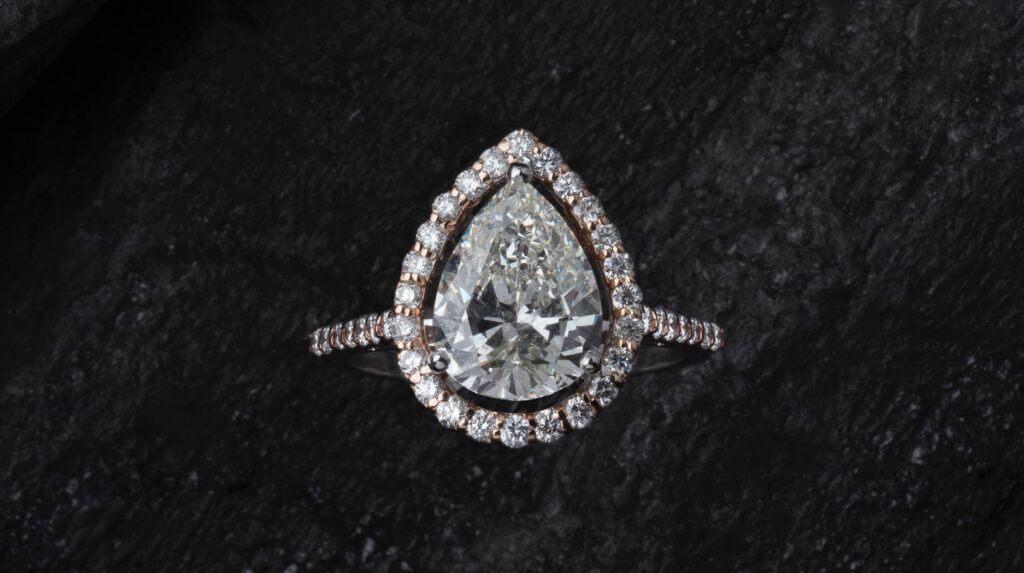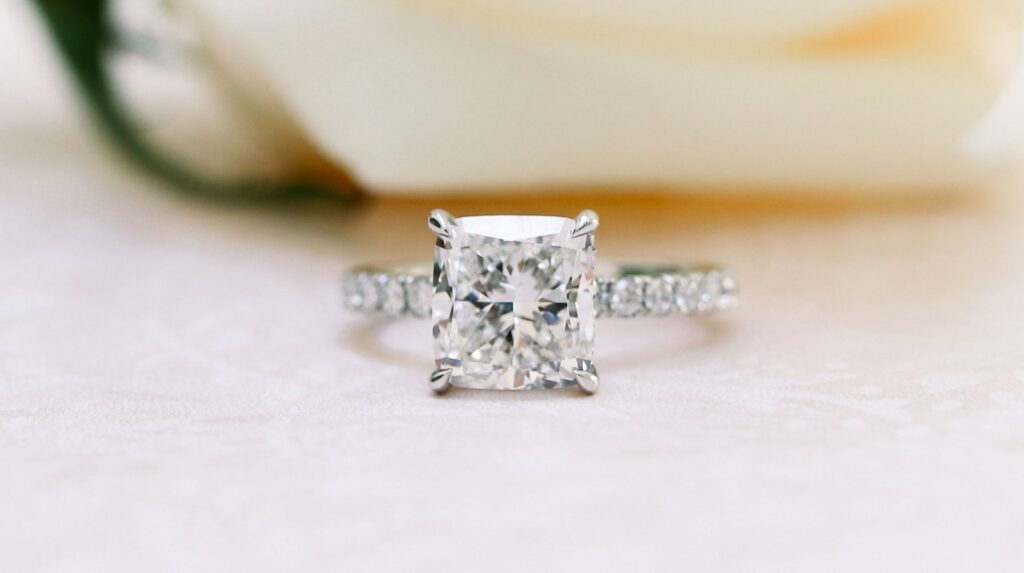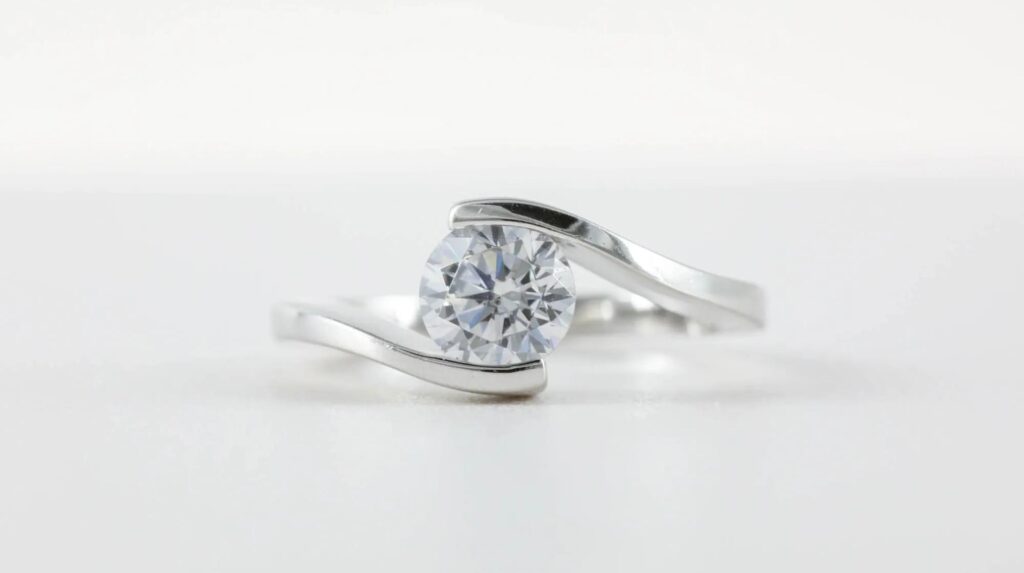Diamond Ring Settings: The Only Guide You'll Need
Importance of Choosing the Right Diamond Ring Setting
The engagement ring setting plays a crucial role in the overall look of the ring. The setting is the way in which the diamond is held in place on the band of the ring. It not only secures the diamond but also enhances its appearance. The right setting can make a smaller diamond look larger and more brilliant, while the wrong setting can hide its true beauty.
Furthermore, choosing the right engagement ring setting can also affect the comfort and durability of the ring. Different settings can affect how the ring feels on your finger, and some settings are more secure than others. Considering your lifestyle, occupation, and personal preferences when choosing a setting can help you find a ring that you will love to wear for years to come.
Choosing an engagement ring setting is an exciting part of the proposal process. With so many options available, it can be overwhelming to decide which one is the right fit. Fear not, we've got you covered! Let's take a closer look at each one to help you make an informed decision.
How Do I Choose The Right Diamond Ring Setting?
Choosing the right diamond ring setting can be a daunting task, but with some guidance, it doesn't have to be. Here are some factors to consider when choosing the right diamond ring setting:
Diamond shape: Different diamond shapes look best with certain types of settings. For example, round diamonds are often set in prongs, while square or rectangular diamonds may look better in a bezel setting.
Lifestyle: Consider your daily activities and hobbies. If you have an active lifestyle or work with your hands, a low-profile setting like a bezel or channel setting may be more practical and less likely to snag or catch on things.
Metal type: Consider the metal type for your ring. Platinum is a popular choice for its durability and hypoallergenic properties, while gold (in various colors like white, yellow, or rose) is a classic choice that can complement a range of skin tones.
Personal style: Your ring should reflect your personal style and taste. Consider the overall aesthetic you're going for, whether it's classic and timeless or modern and unique.
Budget: Different settings come at different price points. Be sure to set a budget before you start shopping and choose a setting that fits within your budget.
When choosing the right diamond ring setting, it's important to keep in mind that there is no right or wrong choice. Ultimately, the setting you choose should make you happy and complement the beauty of your diamond.
What Diamond Ring Setting Makes a Diamond Look Bigger?
Many people want their diamond to appear larger than it actually is. While the size of the diamond is determined by its carat weight, the right setting can make it appear larger. The main settings that can make a diamond look bigger are: Halo setting, Pave setting, Bezel setting, and a Cathedral setting (scroll down to read on each one). It's important to note that while these settings can make a diamond appear larger, they may also add extra cost to the overall price of the ring. Consider your budget and personal preferences when choosing an engagement ring setting that will make your diamond look its best.
The Most Common Diamond Ring Settings
When it comes to choosing an engagement ring, there are a variety of diamond ring settings to consider. Each setting has its own unique characteristics and can affect the appearance of the diamond in different ways. In this section, we'll take a closer look at some of the most popular diamond ring settings and discuss their pros and cons, so you can make an informed decision when selecting the perfect ring for your partner. So let's dive into the world of diamond ring settings and explore the options available to you.Halo Setting
 The halo setting is a popular choice for those who want to add extra sparkle and glamour to their engagement ring. This setting features a center diamond surrounded by a circle of smaller diamonds, which creates a stunning halo effect that enhances the center stone. The smaller diamonds can be round, square, or even pear-shaped, and they are typically set in a pave style, which means they are set very closely together to maximize the amount of sparkle.
The halo setting is a popular choice for those who want to add extra sparkle and glamour to their engagement ring. This setting features a center diamond surrounded by a circle of smaller diamonds, which creates a stunning halo effect that enhances the center stone. The smaller diamonds can be round, square, or even pear-shaped, and they are typically set in a pave style, which means they are set very closely together to maximize the amount of sparkle.
Pros
- Can make a smaller center diamond appear larger
- Creates a unique and eye-catching look
Cons
- Smaller diamonds can be prone to falling out if not properly secured
- More difficult to clean and maintain, as dirt and debris can become trapped between the diamonds
Popular Styles within the Halo Setting
There are many different styles within the halo setting, each of which can create a unique look. Some popular options include:Round Halo: This classic style features a round center diamond surrounded by a circle of smaller diamonds.
Cushion Halo: The cushion halo features a square or rectangular center diamond surrounded by a halo of smaller diamonds.
Double Halo: For even more sparkle and glamour, the double halo features two circles of smaller diamonds around the center stone.
Floral Halo: The floral halo features smaller diamonds set in a pattern that resembles petals or leaves, creating a delicate and feminine look.
No matter which style you choose, the halo setting is sure to add extra shine and sparkle to your engagement ring.
Bezel Setting
 A bezel setting is a type of engagement ring setting that encircles the center stone with a metal rim, securely holding it in place. The metal rim is typically molded to the shape of the diamond or gemstone, creating a snug and protective fit. Bezel settings can be full or partial, with partial bezels leaving a portion of the stone visible. This type of setting is popular for its modern and sleek appearance, as well as its practicality for active individuals.
A bezel setting is a type of engagement ring setting that encircles the center stone with a metal rim, securely holding it in place. The metal rim is typically molded to the shape of the diamond or gemstone, creating a snug and protective fit. Bezel settings can be full or partial, with partial bezels leaving a portion of the stone visible. This type of setting is popular for its modern and sleek appearance, as well as its practicality for active individuals.
Pros
- Secure hold: A bezel setting provides a secure hold for the center stone, making it less likely to come loose or fall out.
- Protection: The metal rim around the stone provides a layer of protection from impact or damage.
- Modern look: Bezel settings have a contemporary and clean look that appeals to many people.
- Versatility: Bezel settings can be used with a variety of diamond shapes and sizes.
Cons
- Cost: Bezel settings tend to be more expensive than other types of settings due to the additional metal needed to create the rim.
- Appearance: While some people love the modern look of bezel settings, others find them less appealing than more traditional settings.
- Light reflection: The metal rim around the stone can block some light from entering and reflecting off the diamond, making it appear slightly less brilliant than it would with a different type of setting.
Popular Styles within the Bezel Setting:
Full Bezel: The full bezel setting completely encircles the diamond or gemstone, providing maximum protection and security.
Half Bezel: The half bezel setting leaves a portion of the stone visible while still providing protection and security.
Flush Bezel: The flush bezel setting is a variation of the full bezel where the metal rim is flush with the stone, creating a seamless and modern look.
Double Bezel: The double bezel setting has two metal rims, creating a layered effect and extra protection for the stone.
Pave Setting
 A pave setting features small diamonds set close together in a pattern on the band of the ring, giving the impression of a continuous surface of diamonds. The diamonds are held in place by small prongs or beads, which are barely visible to the naked eye. A few characteristics about Pave would include the following. Pave settings can have a variety of diamond shapes and sizes, but typically use small, round diamonds. The diamonds are placed in rows or patterns and secured with tiny beads or prongs. Pave settings can be used as an accent to a center diamond or as the main feature of the ring.
A pave setting features small diamonds set close together in a pattern on the band of the ring, giving the impression of a continuous surface of diamonds. The diamonds are held in place by small prongs or beads, which are barely visible to the naked eye. A few characteristics about Pave would include the following. Pave settings can have a variety of diamond shapes and sizes, but typically use small, round diamonds. The diamonds are placed in rows or patterns and secured with tiny beads or prongs. Pave settings can be used as an accent to a center diamond or as the main feature of the ring.
Pros
- The pave setting gives the ring a dazzling and glamorous look, with a lot of sparkle and shine.
- The small size of the diamonds used in pave settings makes them more affordable than larger diamonds.
- The delicate and intricate design of a pave setting can make the ring look more ornate and elegant.
Cons
- Because of the large number of small diamonds used in a pave setting, there is a greater risk of losing a diamond if a prong or bead comes loose.
- The small diamonds used in pave settings may be more difficult to clean, as dirt and grime can get trapped in between the diamonds.
Popular Styles within the Pave Setting
Classic Pave: The diamonds are set in a straight row, without any space between them.
French Pave: The diamonds are set in a V-shaped pattern, with metal beads between them.
Micro Pave: The diamonds are set very close together, creating a more intricate and delicate look.
Tension Setting
 A tension setting is a modern and stylish type of setting that creates the illusion of a floating diamond. Instead of prongs or bezels holding the diamond in place, the tension setting uses the pressure of the metal band to hold the diamond securely. The metal band is specially designed to fit the exact dimensions of the diamond, and it is carefully manipulated to create the right amount of tension to hold the diamond in place.
A tension setting is a modern and stylish type of setting that creates the illusion of a floating diamond. Instead of prongs or bezels holding the diamond in place, the tension setting uses the pressure of the metal band to hold the diamond securely. The metal band is specially designed to fit the exact dimensions of the diamond, and it is carefully manipulated to create the right amount of tension to hold the diamond in place.
Pros
- Tension settings create a unique and striking look that makes the ring stand out.
- These settings allow more light to enter the diamond, enhancing its brilliance and sparkle.
- Tension settings provide excellent security, using the pressure of the metal to hold the diamond firmly in place.
Cons
- Tension settings can be more expensive than other types of settings due to their specialized design.
- These settings can be difficult to resize, so it's important to ensure the ring fits correctly from the beginning.
Popular Styles within the Tension Setting
Classic: The classic tension setting features a simple metal band that creates a sleek and modern look.
Twist: The twist tension setting has a unique design that creates a twisted appearance in the metal band, adding an interesting visual element to the ring.
Split-shank: The split-shank tension setting features a band that splits into two as it approaches the diamond, creating a more elaborate and intricate design.
Conclusion
In conclusion, choosing the right engagement ring setting is an important decision that should not be taken lightly. In this article, we have discussed some of the most popular diamond ring settings, including the prong, halo, bezel, channel, pave, and tension settings. Each setting has its own unique characteristics, pros, and cons, and popular styles.
When choosing the right engagement ring setting, it is important to consider factors such as personal style, budget, and lifestyle. For example, a bezel setting may be a good choice for someone with an active lifestyle, while a pave setting may be better suited for someone who wants a more intricate and glamorous look.
Ultimately, the best way to choose the right engagement ring setting is to do your research, consider your options, and consult with a reputable jeweler. With the right guidance and knowledge, you can find the perfect diamond ring setting that will make your engagement a truly special and memorable occasion.
Looking for the Perfect Diamond Ring Setting?
Look no further than Bova Diamonds! Our expert team can help you choose from a variety of popular settings, including prong, halo, bezel, channel, pave, and tension. Make an appointment today to find the perfect ring for your special someone.

Learn what the community says about of Bova Diamonds
- https://www.blufashion.com/apparel/jewelry/diamonds/shop-diamonds-dallas/
- https://weddingmb.com/use-bova-diamonds-inc-for-your-engagement-rings-in-dallas-texas/
- https://www.lovemydress.net/blog/2019/03/theia-couture-first-look-intimate-scottish-castle-wedding.html
Similar Blogs from Bova
- https://www.bovadiamonds.com/summer-2022-ring-trends/
- https://www.bovadiamonds.com/choosing-her-necklace-extensive-necklace-guide/

